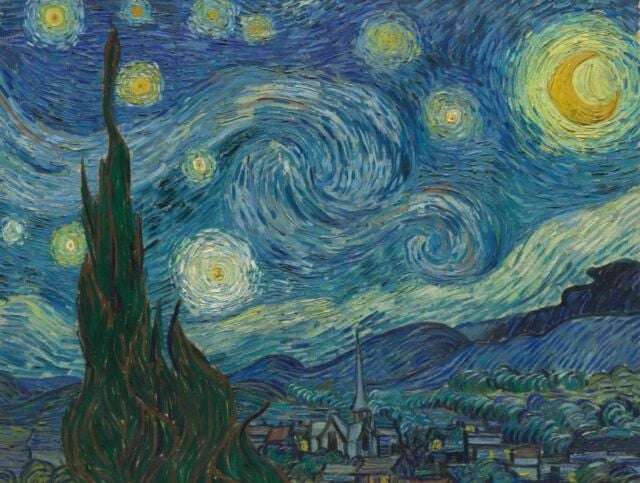
Vincent van Gogh, The Starry Night (1889). Photo: wikimedia
New research on Vincent Van Gogh‘s ‘The Starry Night’ has uncovered a surprising link between the painting and the laws of physics.
Artists have often drawn inspiration from turbulent skies, especially in the swirling patterns seen in The Starry Night. However, Van Gogh’s portrayal of the sky’s cloud and air movement is strikingly accurate from a scientific perspective. After studying the painting’s atmospheric features, researchers concluded that Van Gogh could capture the sky’s dynamic motion.
Using a high-resolution image of the artwork, scientists with expertise in marine sciences and fluid dynamics analyzed Van Gogh’s bold brushstrokes and compared them to the principles of physics.
According to Yongxiang Huang of Xiamen University in China, The Starry Night “reveals a deep and intuitive understanding of natural phenomena. Van Gogh’s precise representation of turbulence might be from studying the movement of clouds and the atmosphere or an innate sense of how to capture the dynamism of the sky.”
The study was published in the scientific journal Physics of Fluids.





Leave A Comment